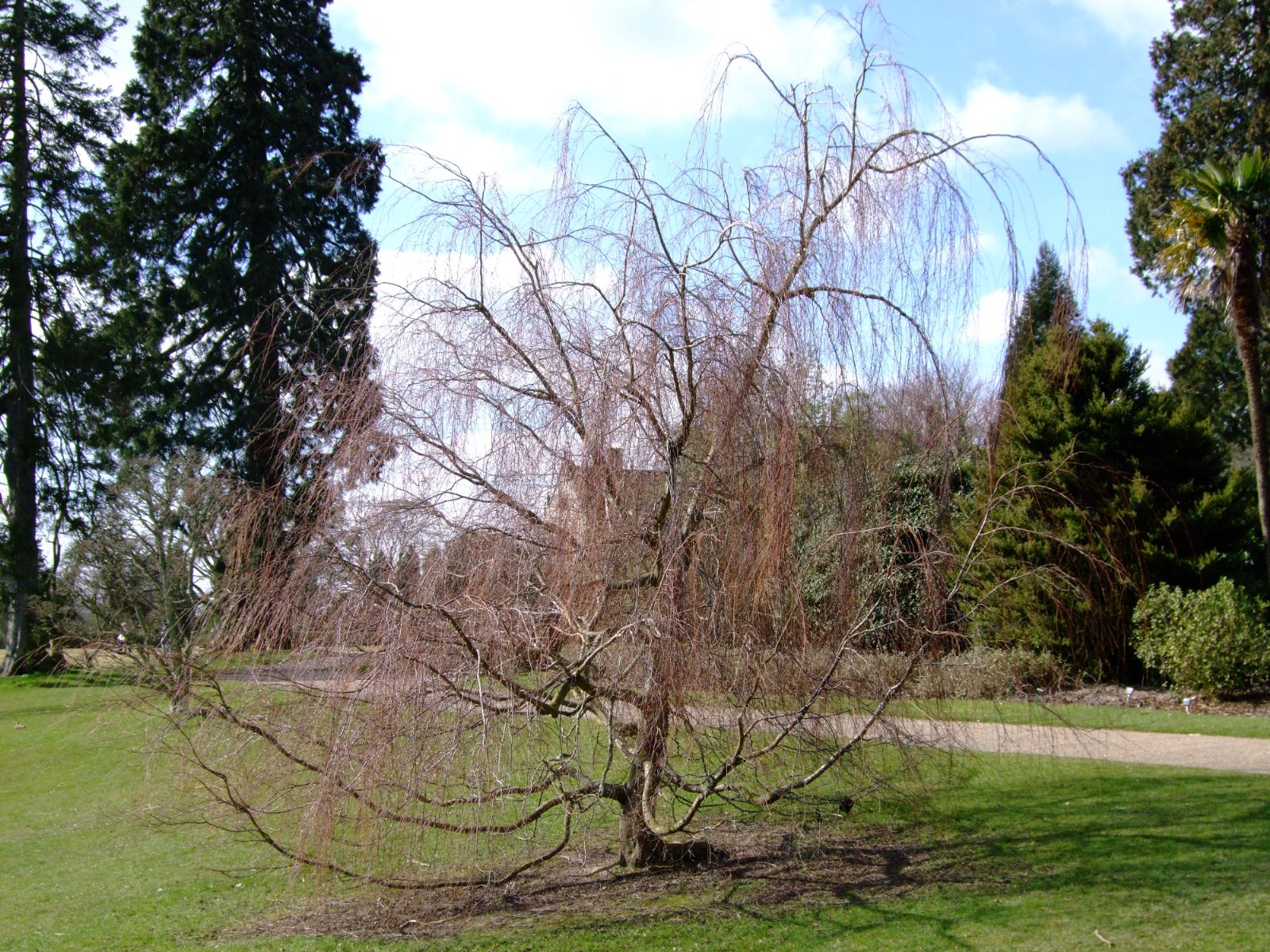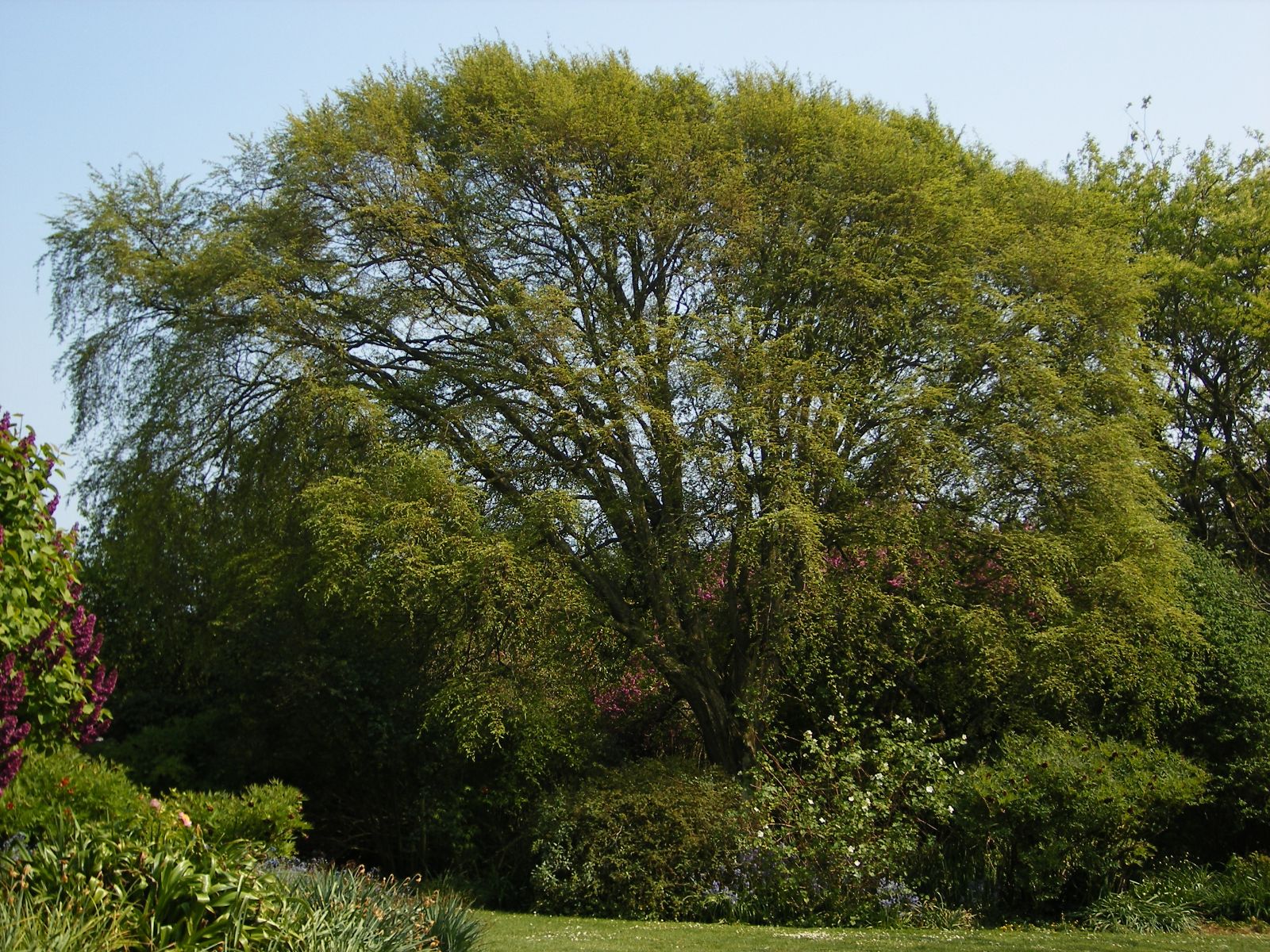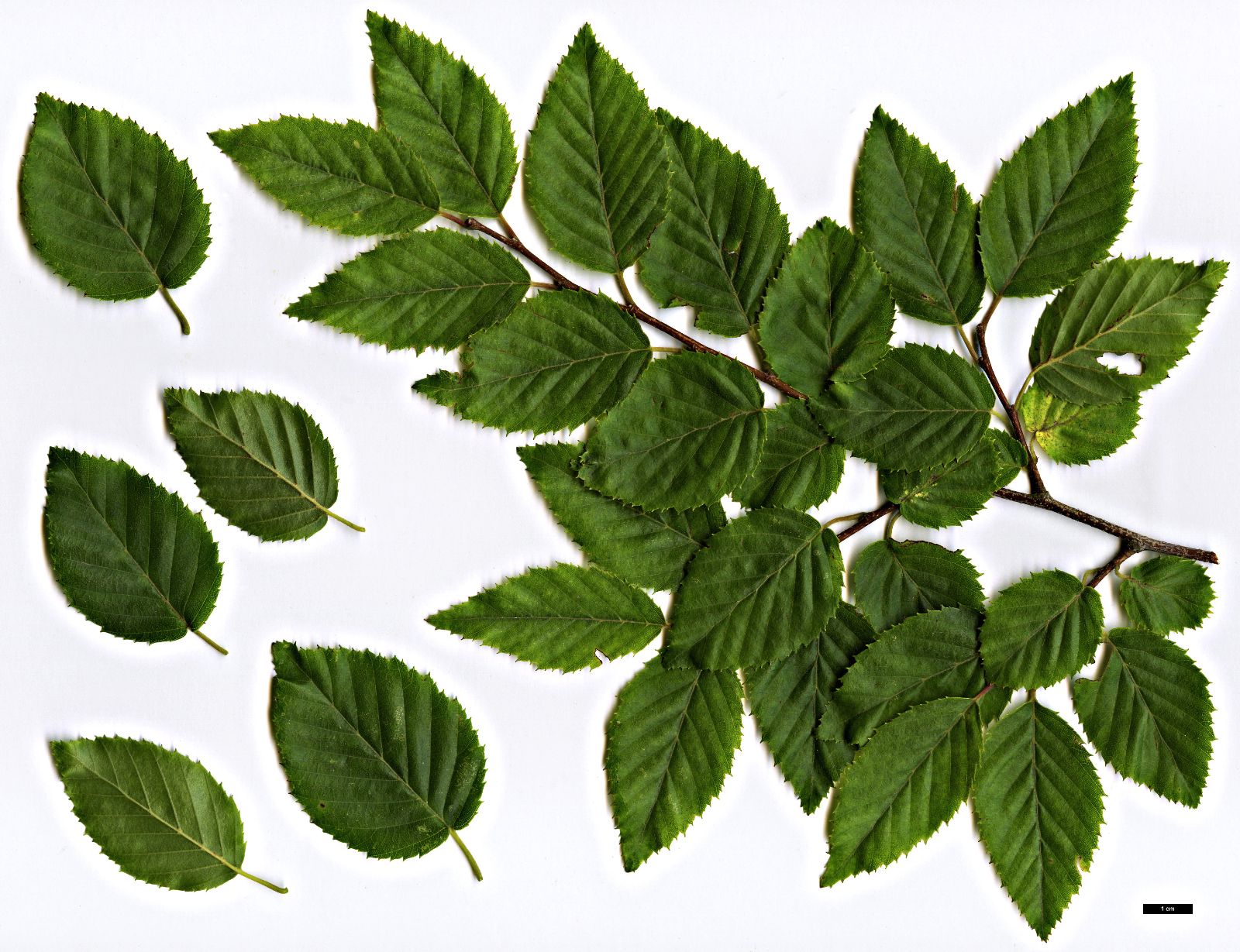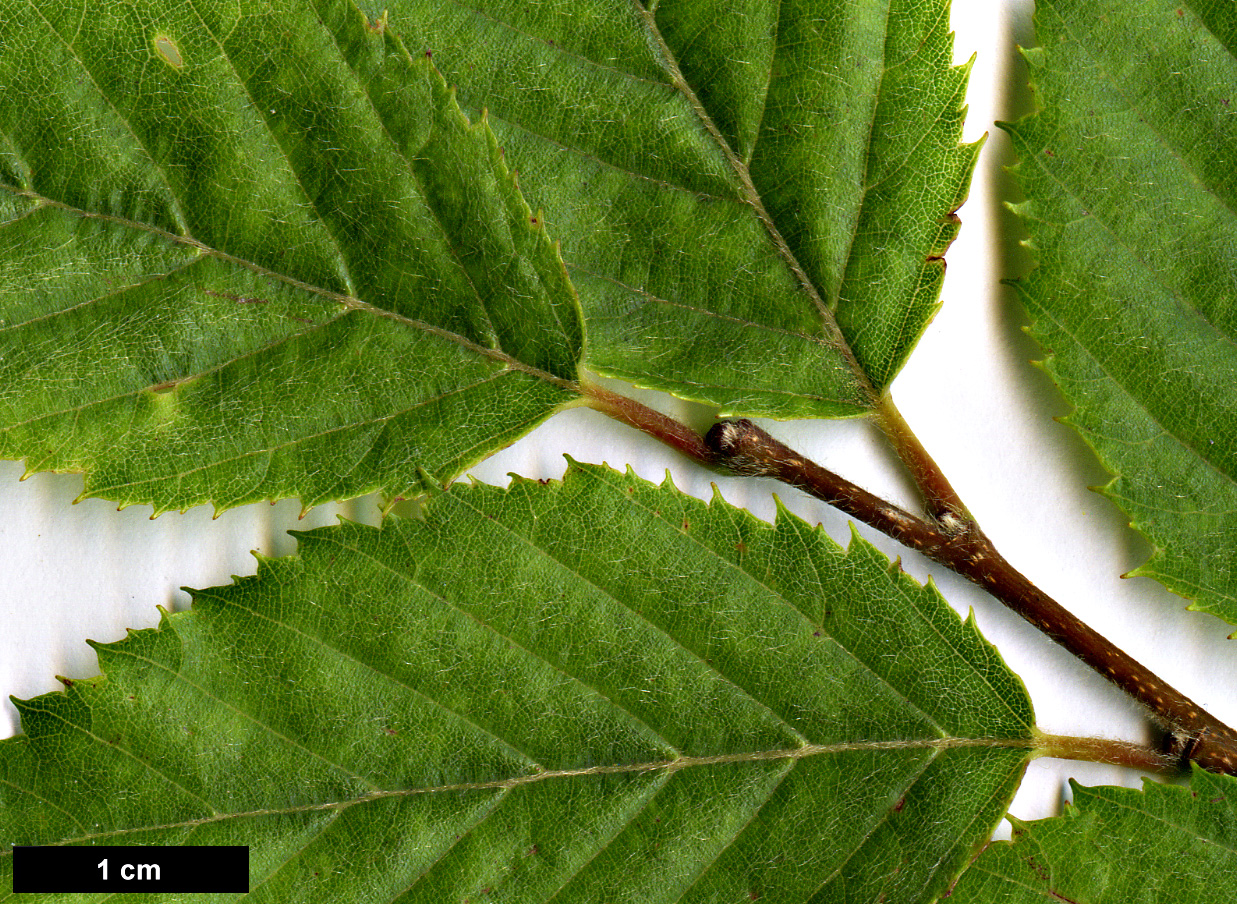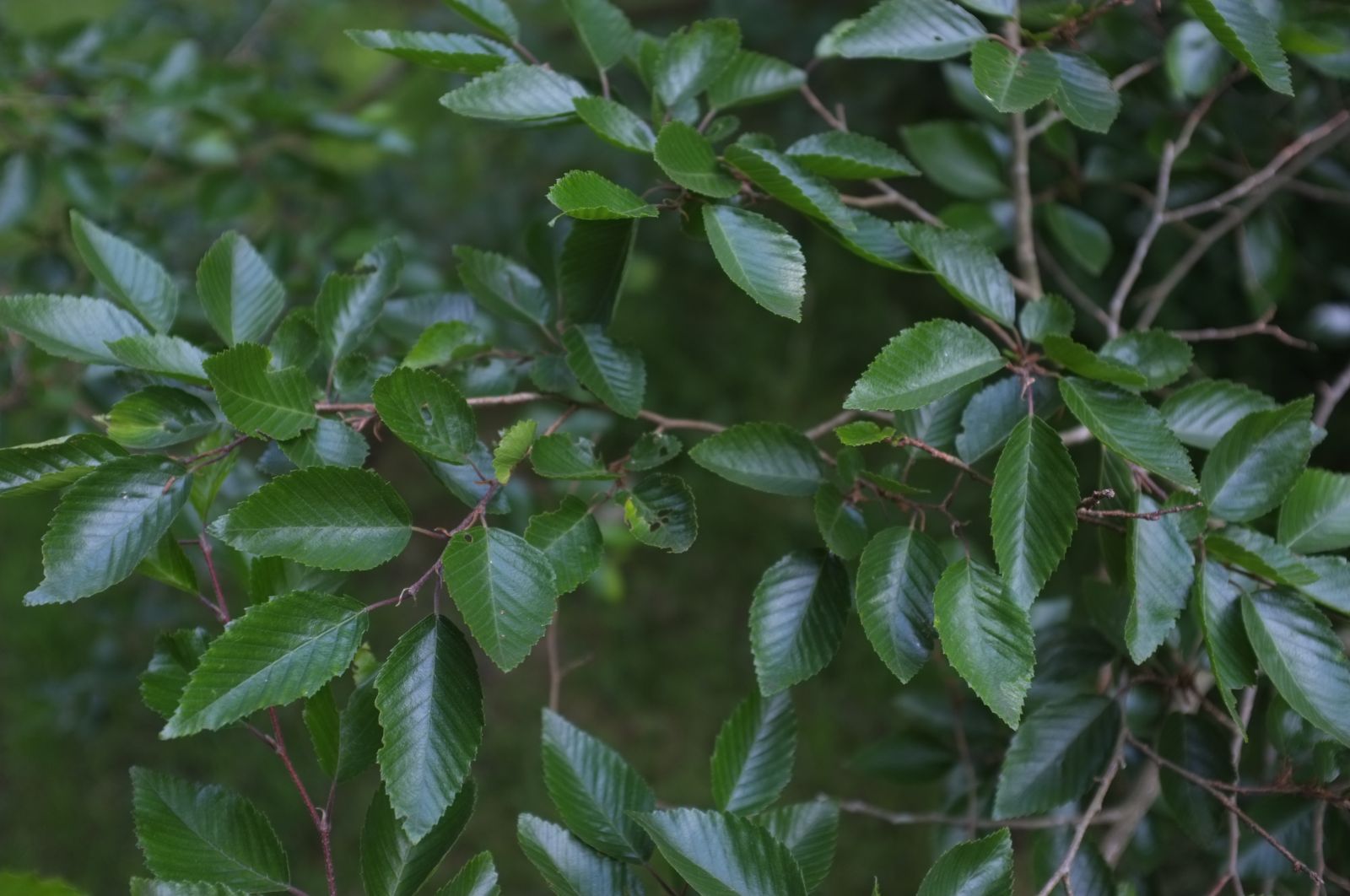Carpinus turczaninovii
Sponsor
Kindly sponsored by
Lord and Lady Aldington
Credits
Owen Johnson (2022)
Recommended citation
Johnson, O. (2022), 'Carpinus turczaninovii' from the website Trees and Shrubs Online (treesandshrubsonline.
Genus
Common Names
- Rock Hornbeam
- Korean Hornbeam
- Turczaninow Hornbeam
Synonyms
- Carpinus chowii Hu
- Carpinus turczaninovii var. chungnanensis P.C. Kuo
- Carpinus paxii H. Winkl.
- Carpinus coreana Nakai
- Carpinus tanakaeana Makino
- Carpinus turczaninovii var. coreana (Nakai) W. Lee
Infraspecifics
Other taxa in genus
- Carpinus betulus
- Carpinus caroliniana
- Carpinus cordata
- Carpinus faginea
- Carpinus fangiana
- Carpinus fargesiana
- Carpinus hebestroma
- Carpinus henryana
- Carpinus japonica
- Carpinus kawakamii
- Carpinus laxiflora
- Carpinus londoniana
- Carpinus mollicoma
- Carpinus monbeigiana
- Carpinus omeiensis
- Carpinus orientalis
- Carpinus polyneura
- Carpinus pubescens
- Carpinus rankanensis
- Carpinus × schuschaensis
- Carpinus shensiensis
- Carpinus tropicalis
- Carpinus tschonoskii
- Carpinus viminea
Tree to 15 m with a densely rounded or sometimes weeping habit. Bark dark grey, finely roughened or shallowly fissured with age. Twigs grey-brown, slender, glabrescent. Leaves ovate, small, 2–6 × 1.3–4 cm; undersides with sparse hairs under the veins and axillary tufts; dark green and glabrous above or with silky hairs along the midrib; lateral veins in 8–12 pairs; margin doubly-serrate or rarely simply serrate, the teeth fine and minutely round-tipped; petiole sparsely pubescent, 4–10 mm; stipules persistent. Fruiting catkins 3–6 cm long; fruit-bract D-shaped, small, 6–20 mm long, sparsely pubescent, the curved side irregularly and deeply toothed to lobulate, the straight side entire or with tiny remote teeth near the tip and with a lobule at the base curved around the nutlet; veins 5. Nutlet small, c. 3 × 2 mm, glabrous except at the tip and with resinous glands, prominently ribbed. (Li & Skvortsov 1999; Bean 1976).
Distribution China Beijing Shi (Jinshan), S Gansu, Henan, Jiangsu, S Liaoning, Sichuan, Shaanxi, Shandong Japan North Korea South Korea
Habitat Temperate forests and scrub, to 2400 m asl in the south of the range.
USDA Hardiness Zone 5-6
RHS Hardiness Rating H6
Awards AGM
Conservation status Least concern (LC)
Taxonomic note Carpinus turczaninovii was named by Henry Hance to honour the Ukrainian-born botanist Nikolai Turczaninov, the first westerner to study this tree in 1831 (Bean 1976). The Cyrillic letter Ɓ which ends Turczaninov’s name is pronounced like the English ‘v’ but used to be traditionally transliterated, particularly in Germany, as a ‘w’ – a letter not available in Latin. Hance therefore wrote turczaninovii for the (Latinised) species name but spelled Turczaninov’s name with a final ‘w’ in the accompanying (English) notes, and this seems to be the origin of the widespread tendency to ‘correct’ the spelling of the botanical name to ‘turczaninowii’ (Hance 1869).
The issue of which hornbeam taxa represent good species and which are better understood as variants of subspecies of others looms particularly large in the case of Carpinus turczaninovii, a species with a wide distribution in central regions of east Asia and hence with a considerable degree of natural variation. In cultivation in the west it generally forms a dainty but hardy tree with rather small leaves, but these likely represent limited sampling, and examples are sometimes seen labelled as C. coreana (or C. turczaninovii var. coreana); this is treated as a synonym in the sources on which this account relies (Plants of the World Online 2022; Holstein & Weigend 2017). Conversely, plants grown in collections as C. stipulata – treated as a synonym for C. turczaninovii by the Flora of China (Li & Skvortsov 1999) – are discussed here under C. henryana var. simplicidentata, and plants grown as C. turczaninovii var. ovalifolia H. Winkl. are discussed under C. fargesiana var. ovalifolia. Furthermore, recent phylogenetic analyses (Dong et al. 2022) have suggested that all these species and their named varieties, along with C. pubescens and C. shensiensis – to include just the taxa represented in western collections – are too closely allied for DNA profiling to be of reliable use in separating them. C. turczaninovii is the earliest available name for a plant of this group, so it seems likely that some future taxonomists will prefer to group all these entities within a much wider concept of C. turczaninovii.
According to Lawrence Hatch (Hatch 2021–2022), Carpinus turczaninovii was introduced to the Arnold Arbortum in Massachusetts in 1905; the original tree here has long gone, but it provided the source for a fine specimen at the Durand-Eastman Park at Rochester in New York. This may also be the origin of a slow-growing nine-metre tree near the Broad Walk at Kew, which according to Alan Mitchell’s notes in The Tree Register was planted in 1912 (although this date is not reflected by the tree’s latter-day ‘made up’ accession number of 1969.11810) (Tree Register 2022; Clarke 1988). Bean (1976) made no mention of this plant but stated that at least one example at Kew derived from the much better documented introduction made from Gansu in north-western China in 1914 by Reginald Farrer (Farrer 331). The current UK champion, 11 m × 67 cm dbh in 2017 (Tree Register 2022), was grown from this seed at Highdown in West Sussex, a remarkable garden in that it is situated on a thin, free-draining and highly reactive alkaline chalk soil on a hillside swept by sea winds. Nearby, a cutting from this tree was planted by Queen Mary in 1937 and has grown equally well; scions of the original tree were marketed by Pan-Global Plants in 2020 (Pan-Global Plants 2020). Another specimen, with a weeping, multi-stemmed habit, in Farrer’s own garden, Ingleborough Hall in the rain-soaked western Pennines, was illustrated in The New Flora and Sylva in 1931 (Bean 1976) and was ‘rediscovered’ 90 years later, encrusted in moss and lichen, by Tree Register volunteers Alan Hunton and John Killingbeck (Tree Register 2022). Despite its rougher habit, its dimensions are quite similar to the Highdown tree’s, a fact which testifies remarkably to this species’ adaptability in cultivation. Another example, probably from the same source, was planted by Lawrence Johnston to form the focal point at the end of the Rose Walk at Hidcote in Gloucestershire and has not disappointed: all these examples are trees of extraordinary elegance, with neatly domed canopies, small bright leaves and very slender winter twigs. Autumn colour is a mix of rich brown and orange (Bean 1976).
Continental Europe also boasts some fine specimens; one at Arboretum Kalmthout in Belgium had a trunk 81 cm thick in 2018 (monumentaltrees.com 2018), and the species has been grown at the Linnaeus Garden of Uppsala University in southern Sweden since 1976 (Royal Botanic Garden Edinburgh 2022). More recently, it has also shown promise at Arboretum Mustila in southern Finland (Arboretum Mustila 2022). Plants from the northern end of the species’ range, in Korea, are likely to be hardy in even tougher conditions.
Carpinus turczaninovii seems to have remained almost continuously available in the UK through the middle decades of the 20th century, most probably via Hilliers Nurseries, and it has also been reintroduced in some variety in recent decades. Plants from SICH 220, collected in Sichuan – to the south of the species’ range as indicated in Flora of China (Li & Skvortsov 1999) – are particularly frequent in English collections and often show the graceful, weeping habit common to several east Asian hornbeams, at least in youth: 1992.1430, growing on the lawn near the mansion at Wakehurst Place in West Sussex, is a particularly good example. These more southerly collections also show the red spring flush which is another attractive feature of the hornbeams from the higher mountains in China (Edwards & Marshall 2019).
Several collections made in South Korea since 1976 (the first being Miller & Hillier 35) represent a population which is considered by a few authorities to belong to a separate species (Carpinus coreana Nakai) or a different variety (var. coreana (Nakai) W. Lee); these plants tend to have glossier, broader leaves (Rushforth 1985). They often form mushroom-shaped bushes (Grimshaw & Bayton 2009) and are particularly favoured by bonsaists, but serious dendrologists may share Tony Kirkham’s view that these plants are vexatious in an arboretum setting (Flanagan & Kirkham 2005). Nevertheless, an example at the Sir Harold Hillier Gardens, from KE 3798, was 7.5 m tall by 2017 (Tree Register 2022). This form is hardy at the Denver Botanic Gardens (Royal Botanic Garden Edinburgh 2022) but needs protection from full sun in California (Digging Dog Nursery 2022). Commercial offerings (in France) include plants from CBKR 1366 and KR 1388 (Pépinière des Avettes 2022).
'Kuro Bijin'
Synonyms / alternative names
Carpinus turczaninovii 'Black Lady'
The first genuinely purple-leaved hornbeam – or at least ‘chocolate-brown’, though the leaves flush green – ‘Kuro Bijin’ was found as a seedling by Hikaru Fujinami in Japan and patented in the United States in 2003 (Hatch 2021–2022); it is represented at the J.C. Raulston Arboretum in North Carolina (J.C. Raulston Arboretum 2022). The same sport has also apparently been marketed in the south-eastern United States under the name ‘Black Lady’; one from Ted Stephens (Nurseries Caroliniana) was planted by Michael Dirr in Athens, Georgia, and grew very slowly (Dirr 2009), and another at the Bartlett Arboretum and Gardens in Connecticutt was obtained from Pike Nurseries of North Carolina in 2012 (Royal Botanic Garden Edinburgh 2022). The clone originated from seed of the form sometimes distinguished as Carpinus coreana Nakai.

